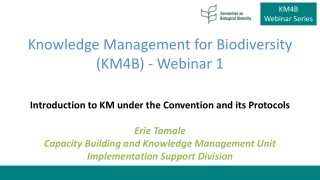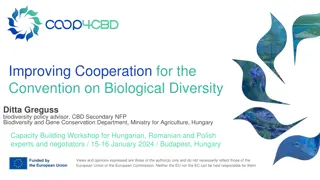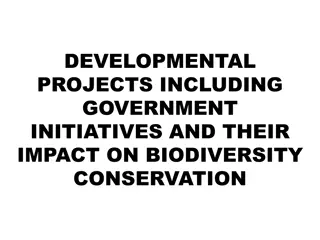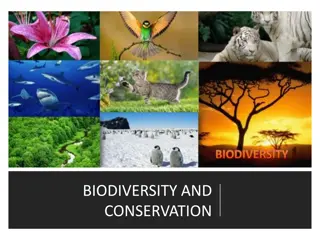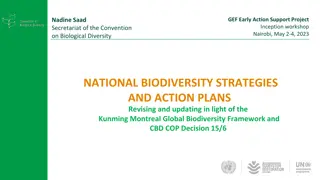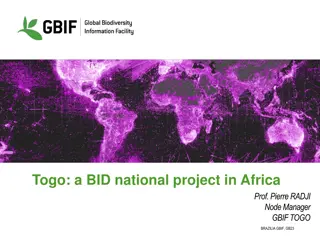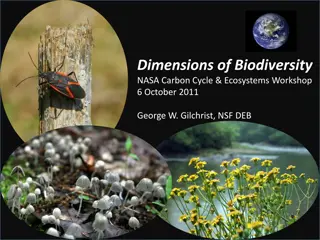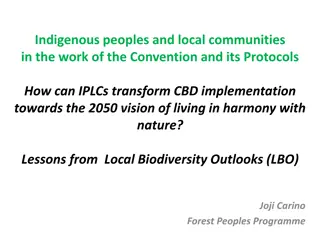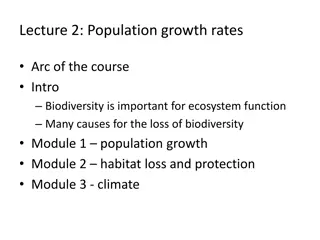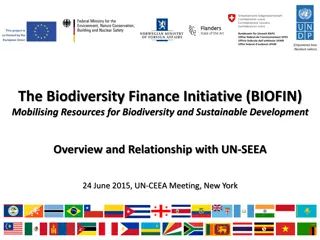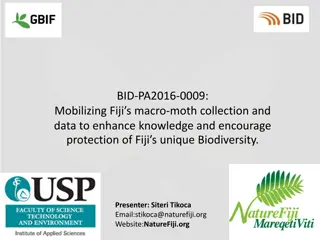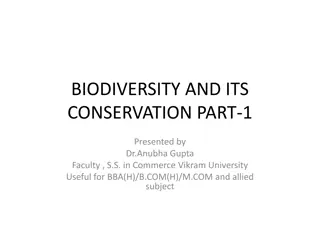Efforts to Save Biodiversity: Strategies and Controversies
Efforts to save individual species include captive breeding, genetic preservation, and legal protections, while protecting entire ecosystems can safeguard multiple species. The Endangered Species Act imposes regulations to preserve endangered plants and animals. However, conservation efforts may spark controversies due to conflicting interests. Worldwide cooperative initiatives, such as those facilitated by IUCN, CITES, and the Biodiversity Treaty, aim to prevent extinctions and promote biodiversity conservation globally.
Download Presentation

Please find below an Image/Link to download the presentation.
The content on the website is provided AS IS for your information and personal use only. It may not be sold, licensed, or shared on other websites without obtaining consent from the author.If you encounter any issues during the download, it is possible that the publisher has removed the file from their server.
You are allowed to download the files provided on this website for personal or commercial use, subject to the condition that they are used lawfully. All files are the property of their respective owners.
The content on the website is provided AS IS for your information and personal use only. It may not be sold, licensed, or shared on other websites without obtaining consent from the author.
E N D
Presentation Transcript
The Future of Biodiversity Section 10-3
List & describe 4 types of efforts to save individual species. Captive breeding programs Breeding species in captivity with the hope of reintroducing populations to their natural habitats Preservation of genetic material Germ plasm: any form of genetic material Stored for future use in research or species-recovery efforts Preserving species in aquariums, zoos, or parks Rarely have enough resources or knowledge to preserve more than a fraction of the world s rare species. Creating laws to protect endangered species US laws among the strongest in the world Controversy about how to enforce and how effective they are
Explain the advantages of protecting entire ecosystems rather than individual species. By protecting entire ecosystems , we may be able to save most of the species in an ecosystem instead of only the ones that have been identified as endangered. The Earth s biosphere depends on all its connected ecosystems.
Describe the main provisions of the Endangered Species Act. US Fish and Wildlife Service must compile a list of all endangered and threatened species. Endangered and threatened animal species may not be caught or killed. Plants on federal land may not be uprooted. No part of a species may be sold or traded. Federal government may not carry out any project that jeopardizes endangered species. US Fish and Wildlife Service must prepare a species recovery plan for each endangered and threatened species.
Discuss ways in which efforts to protect endangered species can lead to controversy. Efforts to save species may conflict with cultural or economic interests. Some people worried that making ivory illegal might increase the rate of poaching instead of decreasing it. Political groups objected to the Biodiversity Treaty
Describe 3 examples of worldwide cooperative efforts to prevent extinctions. The International Union for the Conservation of Nature and Natural Resources (IUCN) facilitates species protection by sharing information on threatened species working with organizations and governments. CITES (the Convention on International Trade in Endangered Species): first effective effort to stop the slaughter of African elephants Biodiversity Treaty: to preserve biodiversity and ensure the sustainable and fair use of genetic resources in all countries.


